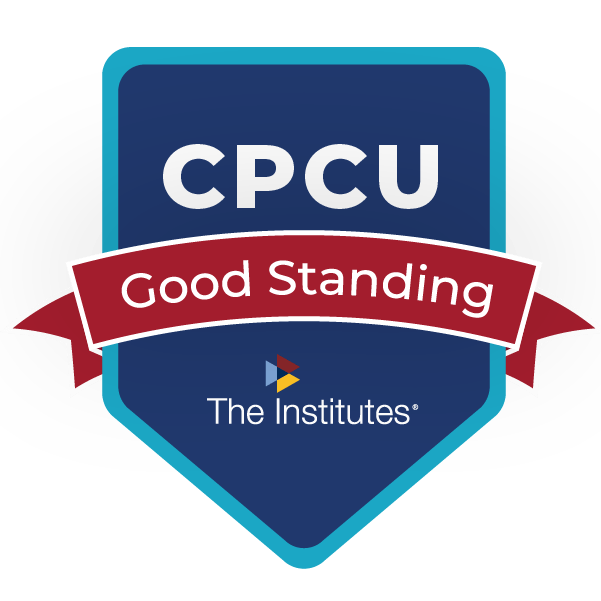Sparring With Bears
 April 6, 2018 – With today’s close of the Dow Jones Industrial Average ending the day down 572.46 points (2.34%), some market forecasters are speculating that we may, after a prolonged run up of equity values, finally be dipping our toes into bearish waters.
April 6, 2018 – With today’s close of the Dow Jones Industrial Average ending the day down 572.46 points (2.34%), some market forecasters are speculating that we may, after a prolonged run up of equity values, finally be dipping our toes into bearish waters.
 Of course, it’s always important to take these forecasts with a grain of salt since nobody can accurately predict the future. Markets go up. Markets go down. Rinse and repeat.
Of course, it’s always important to take these forecasts with a grain of salt since nobody can accurately predict the future. Markets go up. Markets go down. Rinse and repeat.
What’s helpful, though, is to remember your money’s exposure to loss when bears start jabbing:
Bear markets usually last about 15 months
During which time stocks usually decline about 32%
Clients of ours often come into large sums of money following the resolution of a personal injury lawsuit. Many have had their ability to earn a living compromised. Many face long and costly rehabilitation and care costs. Some are dealing with the death of a loved one who may have been the family’s sole breadwinner.
Whatever their circumstances, all our clients have one thing in common:
Their risk tolerance for loss is usually less than that of the typical investor.
Structured Settlement Payees Outlast Bears
Our clients who are lucky enough to structure portions of their settlements never need worry about a bear sending them to the canvas. When choosing guaranteed tax advantaged future income, it doesn’t matter what direction the market takes. This adds an unmatched level of security to their lives which makes adjusting to their new, post-settlement reality that much easier.
To help put the impact of a bear market into perspective, consider the real-life implications for someone netting $1,000,000 from a personal injury lawsuit:
As of today, the market is down 10.1% from its all-time high;
If a person’s investment experience mirrored the DJIA since then;
They would only have $899,000 today.
How would you feel if you lost $101,000 in ten weeks?
Balance and Timing
Our general advice to clients anticipating large personal injury settlement dollars is simple: Structure some, keep some, set some aside for a rainy day.
The structured settlement provides the foundation of most of our clients’ financial plans. This is the money they will live off. Their safety net. The money they can count on if everything else fails.
We tell them to keep some in reserve for immediate and anticipated short term needs.
Depending on their risk tolerance, we tell them to not worry too much and take a little bit of a risk with their money. Much will depend on their time horizon and the severity of their injuries, but most people will do well to put some of their money into the market since time usually works in their favor. Just not more than they can afford to lose.
Bulls and bears come and go but structured settlements just keep on paying. For this reason, structured settlements remain a preferred settlement alternative for guaranteed future income and give clients peace of mind.
You might even call them bear necessities?
Boxing bears courtesy of vectorolie at FreeDigitalPhotos.net
Posted: April 6, 2018 | by dan | Category: Articles, Blog, Structured Settlements | Comments Off on Sparring With Bears
Christmas Magic
December 15, 2017 – Sometimes Christmas magic arrives unexpectedly.
Take this Christmas card I just received from a client our firm helped nearly two years ago:
“Dan,
Not sure if you remember us or not. However, just wanted to say THANK YOU for everything. Since our last meeting, we have purchased a house in (redacted), as well as added an additional family member (smiley face). I’m glad we counted for 3 kids (in designing the structured settlement). We are so grateful for your kindness & support. I hope you and your family have a blessed & Very Merry Christmas!
Take care,
(name redacted)”
When I first met this lovely young couple to discuss their personal injury settlement options, we performed a pretty comprehensive needs-and-wants analysis to ensure we charted the best possible path for their financial future. Ultimately, we designed a structured settlement plan that contemplated them making tax deductible mortgage payments (for a house they had yet to purchase) with tax-free guaranteed income. In addition, we established college funds for their current and contemplated children.
From the sounds of this note, things worked out exactly as planned.
I love when that happens!
At this festive time of year, receiving thoughtful, affirming words of appreciation from someone I helped along the way fills my heart with joy and the spirit of Christmas. I am grateful that my life’s work connects me with so many wonderful people in their time of need and am so appreciative that I can help make their futures, many of which will last long after I’m gone, a little more secure.
Wishing you and yours all the best this holiday season and hoping 2018 brings health, happiness and much success in your personal and professional lives.

Expect magic!
Posted: December 15, 2017 | by dan | Category: Articles, Blog, Structured Settlements | Comments Off on Christmas Magic
Sexual Misconduct Lawsuit Considerations
November 18, 2017 – Having helped countless individuals who prevailed with claims of sexual misconduct against their perpetrators deal with the financial aftermath of their civil settlements and judgments, I wish I could say I am surprised by all these recent allegations.
I am not.
I’ve met the plaintiffs who prevailed against their transgressor priests, teachers, classmates, camp counselors, coworkers, superiors and even grandparents. I’ve seen the photographs and medical records, read the deposition transcripts and listened to the voicemails. The most severe cases especially test one’s faith in humanity to know that people are actually capable of such abhorrent behavior.
The attorneys who undertake this class of cases (and I’ve had the privilege of working with some of the very best in the country) deserve tremendous, special respect because theirs is not an easy task. The litigation process can take such a heavy toll on their personal and professional lives that more than a few have left the practice of law once the matter ended.
Civil Remedies
Statutes likely have already run in many of the cases coming to light over the course of the past few weeks rendering civil justice through the courts problematic. But where lawsuits will proceed, there are some hurdles to consider.
Because the fact pattern laid out in the complaint of any civil lawsuits alleging sexual abuse and/or harassment will determine the tax treatment of any damages paid on the settlement, practitioners need to understand the distinction in the law as it pertains to this type of litigation.
In order for any settlement funds to be considered income tax-free, a demonstrable physical injury must have occurred. In instances of rape and sexual battery, medical records and police reports can easily support a claim of physical injuries.
On the other hand, in many hostile work environment or similar harassment cases where no physical injury (as recognized by U.S. Tax Code interpretation) occurs, these damages are almost universally considered nonphysical in nature and, thus fully taxable.
Two points worth highlighting here:
Emotional distress alone is insufficient to constitute physical injury; and,
Physical contact alone is insufficient to constitute physical injury.
There are some exceptions to these general rules but attorneys working on these types of cases are well advised to make sure all issues are properly evaluated and fully considered prior to filing complaints.
Unintended Consequences?
It’s a very good thing the public seems to finally be taking abuse charges, which for too long have been trivialized when reported, more seriously than they have in years past. We can only hope our culture will change for the better as a result of the focus now placed on sexual misconduct.
I applaud the brave individuals who have had the courage to come forward against the backdrop of a skeptical public and hope criminal and civil justice will ultimately be served for their sake.
That said, I’m mindful of how easy it may become going forward to ruin an innocent person’s life with false accusations and think perhaps another reading of Lillian Hellman’s The Children’s Hour may be in order.

Posted: November 18, 2017 | by dan | Category: Articles, Blog, Structured Settlements | Comments Off on Sexual Misconduct Lawsuit Considerations
The Interest Rate Dance
 August 31, 2017 – Ever since the global financial near-apocalypse of 2009 caused everybody everywhere to rethink everything we thought we knew about money, saving, the market, investing, et cetera, I’ve noticed a pattern here in America. If you’ve been paying attention, you probably noticed it, too.
August 31, 2017 – Ever since the global financial near-apocalypse of 2009 caused everybody everywhere to rethink everything we thought we knew about money, saving, the market, investing, et cetera, I’ve noticed a pattern here in America. If you’ve been paying attention, you probably noticed it, too.
Once a year or more, we hear “they” are going to raise interest rates. They have to, right? Interest rates can’t stay depressed forever. Something’s got to give and we need to get back to normal, whatever that is.
So, the day of this big announcement arrives and everyone’s on pins and needles in anticipation of a big jump in rates that will make us all feel better. Then, at the prescribed hour, the keynote address is delivered ending with an ignoble “Ha, ha, made ya look” tease. Maybe rates go up a smidgen, or maybe they drop a whisker but usually, it’s just crickets. No change.
 In 2009 when I began circulating this chart on Historical Long-Term Interest Rates, a lot of people scoffed at the notion of interest rates remaining low for an extended number of years. I feel no profound sense of pride in being right almost a decade later but it was just too hard to ignore 135 years’ worth of data however painful it was to realize.
In 2009 when I began circulating this chart on Historical Long-Term Interest Rates, a lot of people scoffed at the notion of interest rates remaining low for an extended number of years. I feel no profound sense of pride in being right almost a decade later but it was just too hard to ignore 135 years’ worth of data however painful it was to realize.
Kiplinger even removes the mystery of their latest projection earlier this month with their unambiguously titled article, “Long Rates to Stay Low”.
Economists don’t get more straightforward than that.
There is no shortage of reasons interest rates are likely to remain at or near current levels for the foreseeable future, possibly for another quarter century. So, don’t be surprised if the next time “they” say interest rates are going to go up, nothing much happens.
Since nobody ever really knows what the future holds, it’s worth reminding clients that waiting comes with a cost. Structured settlements and retirement income annuities still make a great deal of sense for most people and will ALWAYS be in style. Why?
Because guaranteed future income has a good beat and you can dance to it.
Images courtesy of sattva and IceHawk33 at FreeDigitalPhotos.net
Posted: August 31, 2017 | by dan | Category: Articles, Blog, Retirement, Structured Settlements | Comments Off on The Interest Rate Dance
Future Income Balancing Act
August 21, 2017 – A lot of people pretend to know a lot about retirement income planning. But few are truly as knowledgeable on the subject as Dr. Wade Pfau, Professor of Retirement Income at The American College and retirement researcher extraordinaire.
Not only does he analyze retirement alternatives with the precision of a Swiss watchmaker, he willingly shares the results of his thorough research with others in an engaging style that simplifies a subject that can otherwise Wade (I couldn’t resist) into esoterica.
As one of his biggest fans and followers, I find his research refreshing in a world where far too often practitioners focus solely on one approach to financial planning to the exclusion of all other approaches or who try to over-simplify the process. If you, like me and most of our clients, are looking for insight into how to more thoughtfully plan for your own future, I highly suggest this blog post by Dr. Pfau where he asks quite non-rhetorically:
Which is Better for Retirement Income: Insurance or Investments?
 Like so much in life, balance matters when it comes to retirement income planning. People who drive cars that are out of alignment or subscribe to diets lacking variety often end up worse off for their planning failures or over-reliance on a single solution.
Like so much in life, balance matters when it comes to retirement income planning. People who drive cars that are out of alignment or subscribe to diets lacking variety often end up worse off for their planning failures or over-reliance on a single solution.
Why not be smarter?
Adopting a balanced approach to future income planning by understanding the benefits and risks associated with ALL the various methods advocated by knowledgeable professionals and then matching the strengths of each with your own future needs should lead you to your own retirement Zen.
Image courtesy of Stuart Miles at FreeDigitalPhotos.net
Posted: August 21, 2017 | by dan | Category: Articles, Blog, Retirement | Comments Off on Future Income Balancing Act
Warren Buffett Talks Structured Settlements
|
Berkshire Hathaway’s 2017 Annual Meeting Excerpt Warren Buffett Knows (and Likes) Structured Settlements |
| May 22, 2017 – Earlier this month, attendees of Berkshire Hathaway, Inc.’s Annual Meeting witnessed Chairman and principal shareholder Warren Buffett respond to a question about the company’s structured settlement holdings.
You can watch the four minute excerpt of this exchange Although the respected “Sage of Omaha” steadfastly refrains from publicly making ANY personal recommendations on ANY type of investment or financial decision, those working in the personal injury litigation field can take comfort in knowing that one of history’s most successful financial investors clearly understands and appreciates the importance and value of structured settlements. In addition to explaining that Berkshire Hathaway is often a preferred choice for those entering into structured settlement arrangements due to the company’s superior financial standing, Chairman Buffett explains that structured settlements are often . . . “. . . urged by the court or urged by family members who really do have the interest of the injured party at heart.” – Warren Buffett – |
| According to Chairman Buffett, Berkshire Hathaway accepts approximately $30,000,000 worth of structured settlement annuity contracts every week ranking the company first among the competitive 5.8-billion-dollar annual structured settlement market (2016 results).
I’m proud of the fact that many of our clients, like those Mr. Buffett references, prefer Berkshire Hathaway for the structured settlements we place on their behalf. And why not? They’re an excellent choice. It’s probably safe to assume that nobody ever went broke emulating Warren Buffett’s approach to money. Long a believer in “slow and steady” winning the race, it only makes sense that he would appreciate the value of structured settlements. If structured settlements were people, they would be Warren Buffett.
Listen to your heart. Choose structured settlements. RELATED: Be sure to read “Managed or Mangled Money” to better understand the lurking risks that can sabotage the futures of those who choose to focus on the sizzle of managed funds instead of the steak of guaranteed income when making financial decisions. |
|
Thank you for the opportunity to be of service and best wishes for continued success in your personal and professional lives. (Reprinted from our May 22, 2017 Newsletter) Heart Money image courtesy of Sira Anamwong at FreeDigitalPhotos.net |
Posted: May 22, 2017 | by dan | Category: Articles, Blog, Newsletter, Structured Settlements | Comments Off on Warren Buffett Talks Structured Settlements
Managed or Mangled Money
April 20, 2017 – If you’ve had money in an actively managed large cap fund in the United States for the past five years, there’s an 88.40% chance your manager underperformed and you would have been better off in a simple, low expense S&P 500 indexed fund instead.
Would you board an airplane that only had an 11.70% chance of reaching its destination?
According to Spiva® Statistics & Reports, managers in the United States were particularly bad at coming out ahead when compared to the general market. Only in Chile were the fund managers less successful.
Remember when, nine years ago, Warren Buffett made a million-dollar bet that a simple, low cost, passively managed S&P 500 indexed fund would outperform an actively managed hedge fund? Absent something unimaginable happening over the next few months, the Berkshire Hathaway Chairman is poised to win his bet.
This report suggests Mr. Buffett knew what his odds were.
Injured Plaintiff Beware
For the past 25 years, I have helped thousands of individuals make decisions totaling hundreds of millions of dollars from $10,000 dog bite injuries to quadriplegics receiving jury verdicts and negotiated settlements totaling more than eight figures and everything in between. For most, dedicating a sizable portion of their settlement toward a structured settlement allows them and their families to move forward from their accident and live their lives with dignity and financial, if not always physical, peace of mind.
But somewhere along the way, a push from the fund management community managed to ingratiate themselves into the plaintiff bar and convinced them, the judges who approve certain settlements and plaintiffs themselves that a managed money fund (with high taxes, fees, and costs) held more promise than a structured settlement to benefit someone whose future has been compromised.
Not all settlement planners, trust attorneys and fund managers touting these managed fund options are intentionally leading their clients to a potentially more insecure future. But with data like those linked in this post, odds of a more positive outcome just don’t seem to be in their favor.
Structured settlements on the other hand, while perhaps too straightforward for some and somewhat boring by comparison, provide safety, certainty and tax advantages not easily replicated by ANY managed fund.
S&P 500 Linked Option
 Fortunately for plaintiffs anticipating personal injury proceeds, the attorneys who represent them AND those with retirement accounts wondering how to best take advantage of the market upswings without the downside risk, there are annuity options available with a market component. A shield, if you will, against market loss.
Fortunately for plaintiffs anticipating personal injury proceeds, the attorneys who represent them AND those with retirement accounts wondering how to best take advantage of the market upswings without the downside risk, there are annuity options available with a market component. A shield, if you will, against market loss.
Fixed Indexed Annuities are available in most states for those with savings and retirement accounts which allow them to invest their money which increases, subject to a cap, when a chosen index increases yet remains neutral when the market declines before ultimately converting it to cash flow they can never outlive.
For those anticipating personal injury settlement proceeds and the contingency fee-based attorneys who represent them, such an option exists with even more distinct tax advantages. Pacific Life introduced its Index-Linked Annuity Payment Adjustment Rider (ILAPA) for those settling injury claims three years ago and it continues to grow in popularity as the market performs well and familiarity increases. All future income is 100% tax-free to the plaintiff while any structured attorney fees are tax-deferred if established properly.
I’m sure there is contrarian data one could point to saying all this research is flawed and actively managed funds do perform better than the attached report suggest. But you know what? I’m not willing to bet too much of my own money on it given these poor odds.
If your injury settlement money or retirement savings represents everything you’re relying on for your future, common sense suggests not taking risks you can’t afford to take and you, too, would be wise to weigh your options carefully. For most, a balanced approach will yield (pun intended) the best outcome.
Image courtesy of Sira Anamwong at FreeDigitalPhotos.net
Posted: April 20, 2017 | by dan | Category: Articles, Blog, Retirement, Structured Settlements | Comments Off on Managed or Mangled Money
California DOI Press Release on Annuities
April 18, 2017 – Earlier this month during National Retirement Planning Week, the California Department of Insurance issued a Press Release urging Californians to “plan for retirement and carefully consider annuities.”
This statement serves as a timely reminder that annuities offer many benefits that simply cannot be matched by traditional retirement investing approaches and often go overlooked by those who continue to focus on asset accumulation in the years leading up to and during retirement.
The newsworthy announcement includes some excellent information and links, including cautions and warnings, designed to help people understand the law and to make the most informed decisions possible about their own financial futures.
Pensions, once a staple of retirement income security for the American workforce, have all but disappeared completely over the past few decades forcing workers to rely on their own skills to ensure they don’t run out of money once their working years come to an end.
Left to their own devices, most people fail to appreciate the statistical probability that any retirement funds they’re able to successfully accumulate during their working life could become fully depleted before they die leaving them dependent upon others for care.
Only annuities can provide guaranteed income for life.
Period!
Annuity guarantees are subject to the financial strength of the life company, naturally, but because life companies pool the mortality risk of large numbers of people, they’re able to help individuals achieve the goal of lifetime income in a fashion that somebody relying on traditional investing methods cannot.
 Retirement income planning doesn’t happen by itself and it’s not a particularly fun exercise. But it’s a necessary step for those seeking to make the transition from working to the next phase of life and can be made much easier by dedicating some portion of their portfolio toward life income annuities.
Retirement income planning doesn’t happen by itself and it’s not a particularly fun exercise. But it’s a necessary step for those seeking to make the transition from working to the next phase of life and can be made much easier by dedicating some portion of their portfolio toward life income annuities.
And sooner is usually better than later.
Just like any purchase, consumers need to educate themselves on the pros and cons of ANY type of retirement income strategy and this California Department of Insurance press release is a good first stop.
We invite you to also check out the rest of our Retirement Income Blog for additional educational information and hope it helps you with your planning.
Image courtesy of Stuart Miles at FreeDigitalPhotos.net
Posted: April 18, 2017 | by dan | Category: Articles, Blog, Retirement | Comments Off on California DOI Press Release on Annuities
Just Published: “A Good Fit”
February 16, 2017 – Proud to announce the recent publication of “A Good Fit,” an article I co-authored for Workers’ Compensation (WC), a quarterly periodical of CLM Publishing.
Subtitled “Structured settlements and MSA arrangements are complementary claims resolution tools,” the article highlights the laws surrounding the Medicare Secondary Payer Act and gives examples of how and why structured settlements perfectly complement the resolution of claims requiring Medicare Set Aside allocations.
Billing itself as “the largest professional association in the insurance industry with a membership of more than 35,000 professionals in the claims resolution and litigation management industries,” the CLM serves as an excellent resource for the insurance leadership community as well and the claims and litigation staffs and consultants who serve them.
Worth mentioning: While this article focuses on the benefits of combining structured settlements with MSAs when resolving workers’ compensation claims, the same concept can apply when settling liability claims even though MSAs have yet to be fully embraced by the liability claims resolution community.
I hope you enjoy the article and look forward to answering any questions you have on the topic going forward.
Posted: February 16, 2017 | by dan | Category: Articles, Blog, Structured Settlements | Comments Off on Just Published: “A Good Fit”
With Friends Like These . . .
January 23, 2017 – As a post-settlement income planning specialist for more than 25 years, I have countless examples of situations where clients anticipating large sums of money improved their lives greatly by choosing to allocate some of their settlement proceeds toward a structured settlement arrangement.
If properly implemented, structured settlements pay future income that is 100% tax-free (if for a physical injury) or tax-deferred (if for certain nonphysical injuries), management fee-free and come with guarantees from companies boasting some of the best balance sheets in the financial services industry.
What’s not to like about safe, secure, tax-advantaged guaranteed income?
But while structured settlements have helped secure the futures of thousands of people over the past 40 years (and are still going strong despite the financial roller coaster ride many experienced during the past decade), sometimes people just decide cash is a better option. Often their reasoning is sound and they have better perceived uses for their settlement dollars.
But of all the reasons people give for rejecting a structured settlement option, there’s one that always makes me cringe:
“I have a friend who will help me manage my money.”
. . . Who Needs Enemies?
 Sometimes clients really do have knowledgeable friends who can provide valuable advice.
Sometimes clients really do have knowledgeable friends who can provide valuable advice.
But history is littered with stories of “friends” who end up going full-scale Bernie Madoff with other people’s money leaving hard lessons about trust and friendship in their wake.
Take last week’s story in the Orange County Register headlined “Woman gets year in jail for scamming investors, church members out of millions.”
Ever notice how some of best con artists notoriously hide in plain sight infiltrating organizations where people often feel most safe?
Because trust is exchanged so naturally where people with shared values, backgrounds and interests congregate (churches, country clubs, family reunions, alumni associations, Internet chat rooms, etc.), many never suspect the underlying nefarious motives of those seeking to do them harm.
When I read this story, I was reminded of a case I once worked on where Anthony (not his real name), a 19-year-old paraplegic with very specific future income needs who would have been well-served by a structured settlement, took his entire $1,900,000 recovery in cash because his mom said they had “friends at the church who cared about him” and had pledged to help.
Neither the church nor the “friends” were identified and I don’t know whatever became of Anthony. But I sure hope he wasn’t connected with the same church as these other victims listed in the Register article or one similar.
(NOTE: One of the victims mentioned was “a family friend who received money after suffering a personal injury,”)
Even in the best situations where people do have their funds properly managed, the impact of management fees, taxes and expenses often offset the value of any additional advantage clients seek to gain by investing themselves versus structuring part of their injury settlement recovery.
But trusting one’s future to “friends,” who often start showing up just about the time settlement negotiations are coming to an end, is a high-risk proposition that everybody is cautioned to be on guard against.
Like most things in life, a balanced approach to post-settlement injury income planning usually makes the most sense and leads to the optimum outcome.
That’s what a real friend would tell you anyway.
Posted: January 23, 2017 | by dan | Category: Articles, Blog, Structured Settlements | Comments Off on With Friends Like These . . .

 When it comes to making decisions about personal injury settlement proceeds, structured settlements might not stand out as the shiniest toy in the store. But anyone seeking the best, safest and most durable option when settling a personal injury claim would be hard pressed to find anything better.
When it comes to making decisions about personal injury settlement proceeds, structured settlements might not stand out as the shiniest toy in the store. But anyone seeking the best, safest and most durable option when settling a personal injury claim would be hard pressed to find anything better.

















